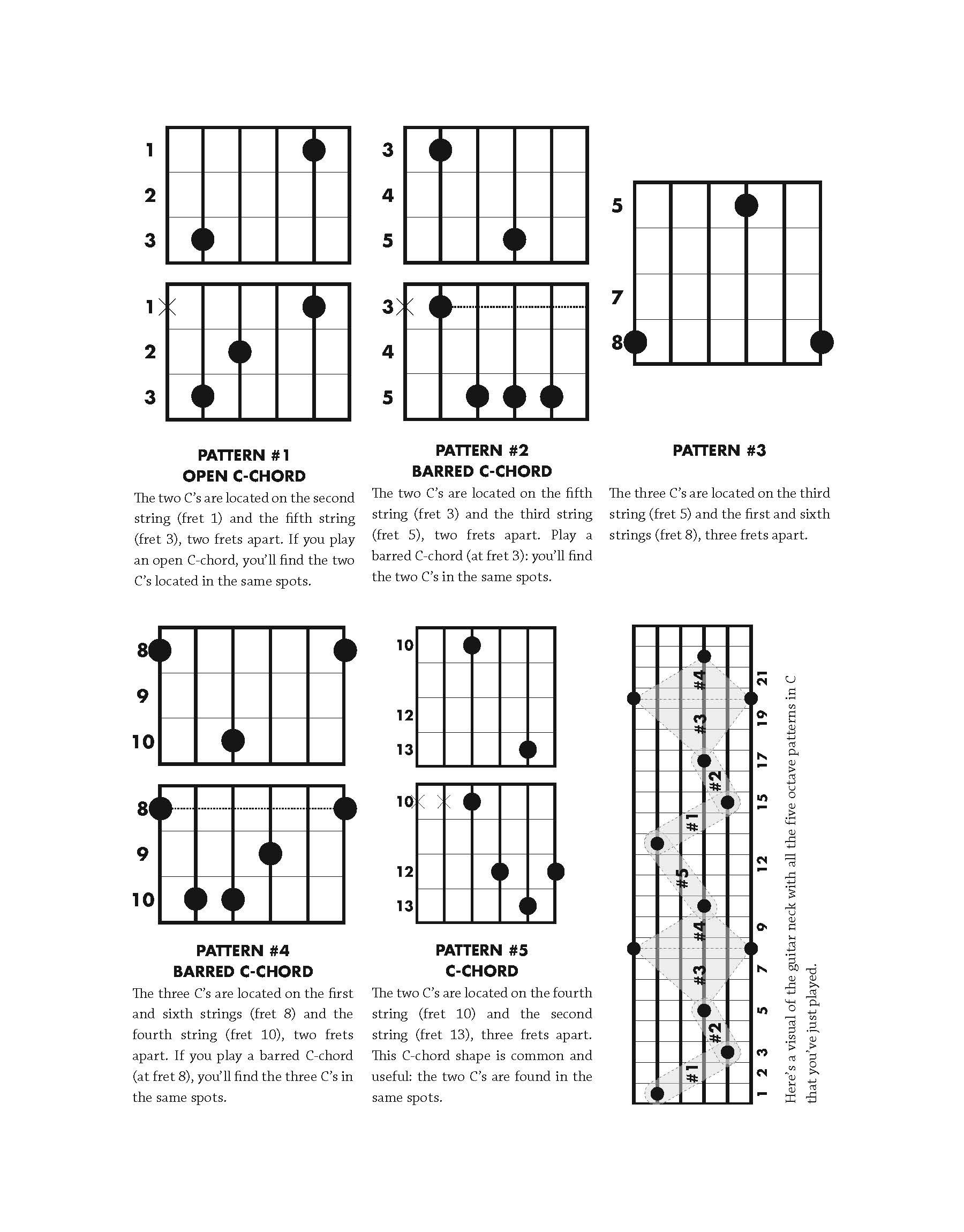Learning Guitar Octaves is a fundamental step towards truly understanding your instrument. By grasping just five octave patterns, you’ll begin to see the guitar neck in a whole new light. This knowledge will boost your confidence, expand your musical vocabulary, and open up exciting possibilities for both rhythm and lead guitar playing.
Understanding Guitar Octaves
In Western music, an octave is the interval between one musical note and another with double its frequency. Think of it as the same note, but higher or lower. This interval spans eight notes in a standard scale, encompassing 12 semitones on the guitar (where each fret represents one semitone).
You can easily hear an octave by playing the open high E string (1st string) and then playing the same string at the 12th fret. Both notes are E, but the 12th fret E is an octave higher. Playing any note an octave higher doubles its sound frequency.
An octave pattern on guitar refers to the specific shape created on the fretboard when you connect a note to its octave on a different string. These patterns are consistent and repeatable across the fretboard, making them incredibly useful for navigation.
Why Learning Octave Patterns is a Game Changer
- Fretboard Mastery: Suddenly, the fretboard becomes less mysterious. Whether you’re improvising a solo, crafting a riff, or adding fills, octave patterns provide a clear roadmap.
- Enhanced Musicality: Playing melodies in octaves adds thickness and power to your sound. This technique can dramatically increase the energy of a song or solo, emphasizing melodic lines for greater impact. Experiment with effects pedals to further enhance this sonic texture.
- Scale Mastery Made Easy: Learning scales becomes significantly simpler when you know your octaves. They act as anchor points, helping you visualize and memorize scale patterns across the fretboard.
- Chord Versatility: If scales aren’t your focus, octave patterns are invaluable for improvising around chord tones. They serve as reliable guideposts, allowing you to navigate chord changes with ease.
- Beyond Barre Chords: Break free from relying solely on open and barre chords. Octave patterns enable you to locate smaller chord voicings (using fewer strings). These smaller chords create space in arrangements, encourage more creative guitar parts, and complement other instruments like bass, keyboards, or other guitars more effectively.
Discovering the Five Octave Patterns in C
Let’s put theory into practice and find every C note on the guitar using the five core octave patterns. We’ll focus on the key of C for simplicity. Some patterns will contain two C notes, while others might include three. Pay attention to the strings involved in each pattern and the finger spacing required. Some patterns use a two-fret span (index and ring finger), while others use a three-fret span (index and pinky finger). As we work through the five patterns, you’ll notice they begin to repeat in the same sequence up the neck, and importantly, how they overlap each other, creating a seamless map of the fretboard.
 Guitar fretboard diagram showing five octave patterns in C for guitarists.
Guitar fretboard diagram showing five octave patterns in C for guitarists.
By mastering these five octave patterns, you’ll unlock a deeper understanding of the guitar fretboard, leading to more confident, creative, and expressive playing. Start practicing these patterns in different keys and integrate them into your practice routine to truly revolutionize your guitar playing.

